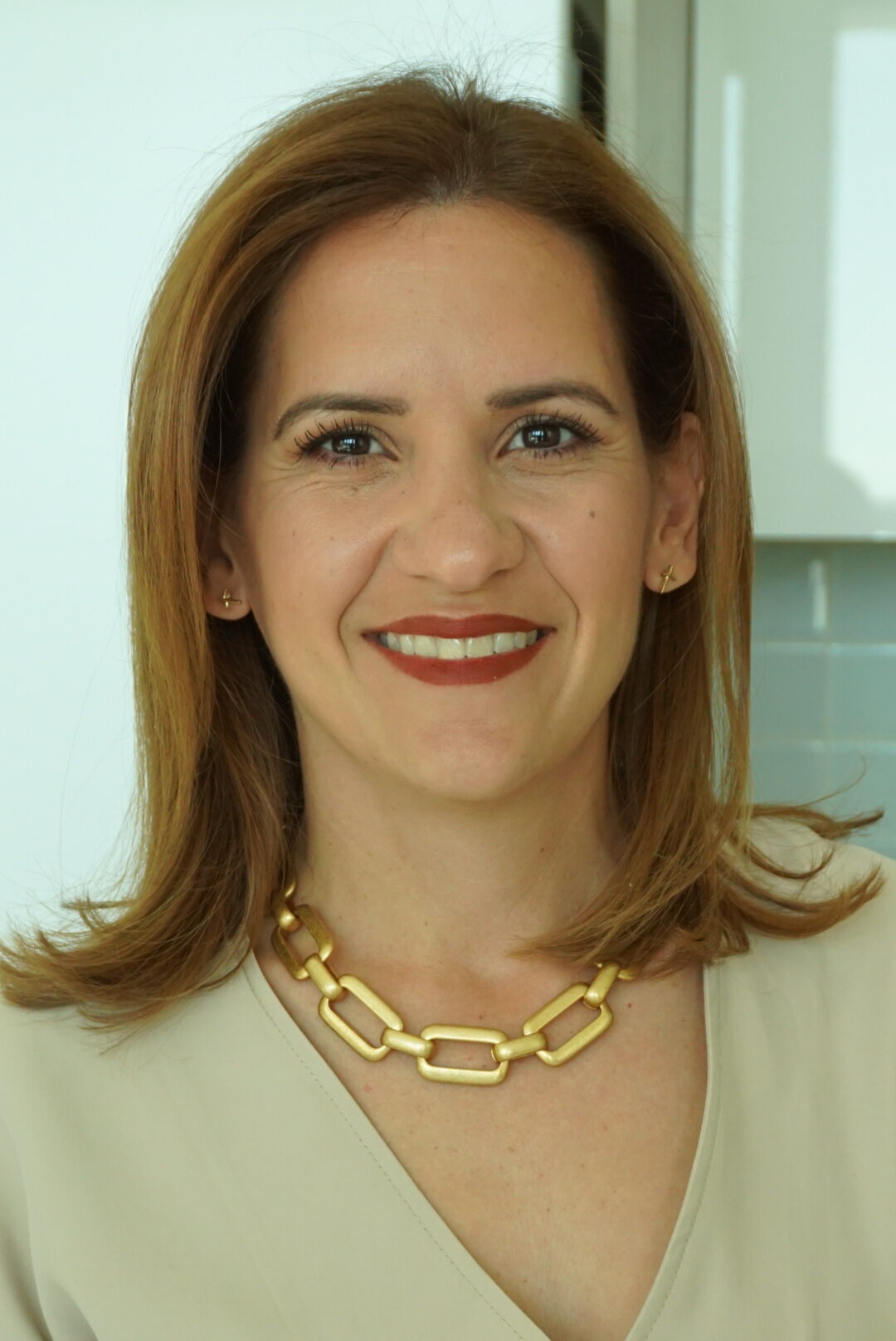THE BEST REAL ESTATE OUT THERE
We’re a family-run business with an in-depth local knowledge and connections.
Know The Industry
Haus takes care of it all
“Nos ayudaron a buscar en poco tiempo un apartamento apropiado para nuestra hija. Este proceso, que puede ser de mucha tensión, lo hizo ameno y muy instructivo.
Local expertise & insights
We live, work, and play just down the street from all our clients – so when it comes to finding your next dream home or selling your current one – we know what’s up!
Build People's Dreams
We’re all about giving our customers an amazing, stress-free experience. You can rely on us to provide the best customer service, so that you can enjoy the home of your dreams.
Expertise You can Trust
We know what it takes to make a sale. As well as being licensed professionals, every member of our team has been involved in real estate for years and knows the ins and outs of the industry.
Meet the Haus & Haus Family

Johanna Diaz
Managing Partner
Johanna L. Díaz is a licensed real estate broker in Puerto Rico and a member of the Puerto Rico Association of REALTORS® and the San Juan Board of REALTORS®.
As a broker, she has worked with investors, Act 20-22 residents and developers, and has managed to bring
them success in each of their real estate investments.
“I know that the purchase of a house is the largest and most complicated financial transaction you’ll ever
be involved. That’s what am here for…. to maximize your most important investment.” – Johanna Díaz,
C-20726

Jose Rivera
President
José A Rivera is a listing-focused real estate broker who exposes his clients’ property through dynamic tools, effective marketing, and strategic location. As a member of the Puerto Rico Association of REALTORS® and the San Juan Board of REALTORS®, José is able to expose his sellers; homes to a wide range of potential sellers.
FAQ
We Are Here To Help You With Any Questions You May Have
Getting pre-approved for a mortgage is the first step of the home buying process. Getting a pre-approval
letter from a lender will let you know how much you can borrow. Knowing how much home you can
afford narrows down online home searching to suitable properties; thus, no time is wasted considering
homes that are not within your budget. (Pre-approvals also help prevent disappointment caused by
falling in love unaffordable homes.)
Second, the loan estimate from your lender will show how much money is required for the down
payment and closing costs, according to the product that has been offered to you (FHA, VA,
Conventional, etc.). You may need more time to save up money, liquidate other assets or seek mortgage
gift funds from family. In any case, you will have a clear picture of what is financially required.
Finally, being pre-approved for a mortgage demonstrates that you are a serious buyer to both your real
estate agent and the person selling their home.
In sellers’ markets, increasing demand for homes drives up prices. Here are some of the drivers of
demand:
Economic factors – the local labor market heats up, bringing an inflow of new residents and pushing up
home prices before more inventory can be built.
Interest rates trending downward – improves home affordability, creating more buyer interest,
particularly for first time home buyers who can afford bigger homes as the cost of money goes lower.
A short-term spike in interest rates – may compel “on the fence” buyers to make a purchase if they
believe the upward trend will continue.
Buyers want to make a move before their purchasing power (the amount they can borrow) gets eroded.
Low inventory – fewer homes on the market because of a lack of new construction. Prices for existing
homes may go up because there are fewer units available.
Most loan programs require a FICO score of 620 or better. Borrowers with higher credit scores represent
less risk to the lender, often resulting in a lower the down payment requirement and better interest
rate. Conversely, home shoppers with lower credit scores may need to bring more money to the table
(or accept a higher interest rate) to offset the lender’s risk.
If the built-up equity in your current home will be applied to the down payment on the new home,
naturally the former will need to be sold first.
Some home buyers decide to turn their current home into an investment property, renting it out. In that
case, the current home will not need to be sold. However, your loan advisor will still need to evaluate
your risk profile and credit history to determine whether making a loan on a new home is feasible while
retaining title to the old home.
Buyers often have a short time frame to sell their current home when relocating to a new city because
of a job transfer. If you are moving but taking a position with the same employer, check to see if they
offer relocation assistance to help offset some of the costs.
Written offers should stipulate the timeframe in which the seller should respond. Giving them twenty-
four hours should be sufficient.
When you make an offer on a home, your agent will ask for a check to accompany it (checks are the
same as cash, and the deposit is typically 1% to 2% of the purchase price). Earnest money is made in
good faith to demonstrate – to the seller – that the buyer’s offer is genuine. Earnest money essentially
takes the home off the market to anyone else and reserves it for you.
The check (or sometimes cash) is deposited in a trust or escrow account for safekeeping. If a deal is
struck, the earnest money is applied to the down payment and closing costs. If the deal falls through,
the money is returned to the buyer.
Important: if the terms of a deal are agreed upon by both parties, but then the buyer backs out, the
earnest money may not be returned to the buyer. Ask your agent about the ways to protect your
earnest money deposit and the ways to protect it – such as offer contingencies.
It’s not required, but it’s highly recommended. Final walk-throughs give buyers a chance to make sure nothing had changed since their first visit. If repairs were requested, as part of the offer, a follow-up visit ensures that everything is squared-away, as expected, per the terms of the contract.
From start (searching online) to finish (closing escrow), buying a home takes about 1 to 3 weeks. Later,
after a home is selected and the offer is accepted, the average time to complete the escrow period on a
home is 30 to 45 days (under normal market conditions).
Though, well-prepared home buyers who pay
cash have been known to purchase properties faster than that.
A buyer’s market is characterized by declining home prices and reduced demand. Several factors may
affect long-term and short-term buyer demand, like: Economic disruption – a big employer shuts down
operations, laying off their workforce.
Interest rates trending higher – the amount of money the people can borrow to buy a home is reduced
because the cost of money is higher, thus reducing the total number of potential buyers in the market.
Home prices drop to meet the level of demand and buyers find better deals.
Short-term drop in interest rates – can give borrowers a temporary edge with more purchasing power
before home prices can react to the recent interest rate changes. High inventory – a new subdivision and can create downward pressure on prices of older homes nearby, particularly if they lack highly desirable features (modern appliances, etc.)
Natural disasters – a recent earthquake or flooding can tank property values in the neighborhood where
those disruptions occurred.
The national average for down payments is 11%. But that figure includes first time and repeat buyers.
Let’s take a closer look.
While the broad down payment average is 11%, first time homebuyers usually only put down 3 to 5% on
a home. That’s because several first-time home buyer programs don’t require big down payments. A
longtime favorite, the FHA loan, requires 3.5% down. What’s more, some programs allow down
payment contributions from family members in the form of a gift.
Some programs require even less. VA loans and USDA loans can be made with zero down. However,
these programs are more restrictive. VA loans are only made to former or current military
service members. USDA loans are only available to low to-middle income buyers in USDA-eligible rural
areas.
For many years, conventional loans required a 20% down payment. These types of loans were typically
taken out by repeat buyers who could use equity from their existing home as a source of down payment
funds. However, some newer conventional loan programs are available with 3% down if the borrower
carries private mortgage insurance (PMI).
That’s up to you! For sure, home shopping today is easier today than ever before. The ability to search
for homes online and see pictures, even before setting a foot outside the comfort of your living room,
has completely changed the home buying game. Convenience is at an all-time high. But, nothing beats
visiting a home to see how it looks and ‘feels’ in person.
Sellers can flat-out accept or reject an initial offer. But there’s a third path that is quite common, sellers can initiate a counteroffer. Remember this: a deal isn’t dead until it’s dead. So, if a counteroffer is proffered by the seller, you’re still in the game. You and your agent just need to review it determine whether the counteroffer is acceptable. If so, then approving it closes the deal immediately.
Keep in mind, offers and counteroffers can go back-and-forth many times; this is not unusual and negotiations are a part of what Realtors do as a matter of routine. Each revision should bring both parties closer together on the terms of the deal.
Yes! Home inspections are required if you plan on financing your home with an FHA or VA loan. For
other mortgage programs, inspections are not required. However, home inspections are highly
recommended because they can reveal defects in the home that are not easily detected. Home
inspections bring peace of mind to one of the biggest investments of a lifetime.
